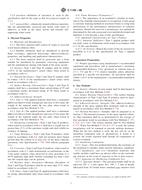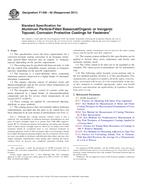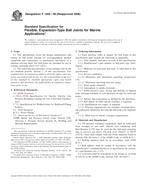1.1 This practice provides a methodology to use an in situ procedure for the evaluation of delayed contact hypersensitivity reactions.
1.2 This practice is intended to provide an alternative to the use of guinea pigs for evaluation of the ability of a device material to stimulate delayed contact hypersensitivity reactions. This alternative is particularly applicable for materials used in devices that contact only intact skin. However, the guinea pig maximization test is still the recommended method when assessing the delayed hypersensitivity response to metals or when testing substances that do not penetrate the skin but are used in devices that contact deep tissues or breached surfaces. The guinea pig maximization test should be used for these substances.
1.3 This practice consists of a protocol for assessing an increase in lymphocyte proliferation within the nodes draining the site of administration on the ears of mice.
1.4 The LLNA has been validated only for low molecular weight chemicals that can penetrate the skin. The absorbed chemical or metabolite must bind to macromolecules, such as proteins, to form immunogenic conjugates.
1.5 This practice is one of several developed for the assessment of the biocompatibility of materials. Practice F 748 may provide guidance for the selection of appropriate methods for testing materials for a specific application.
1.6 This standard does not purport to address all of the safety concerns, if any, associated with its use. It is the responsibility of the user of this standard to establish appropriate safety and health practices and determine the applicability of regulatory limitations prior to use.
1.7 Identification of a supplier of materials or reagents is for the convenience of the user and does not imply single source. Appropriate materials and reagents may be obtained from many commercial supply houses.
Product Details
- Published:
- 10/01/2006
- Number of Pages:
- 5
- File Size:
- 1 file , 81 KB


